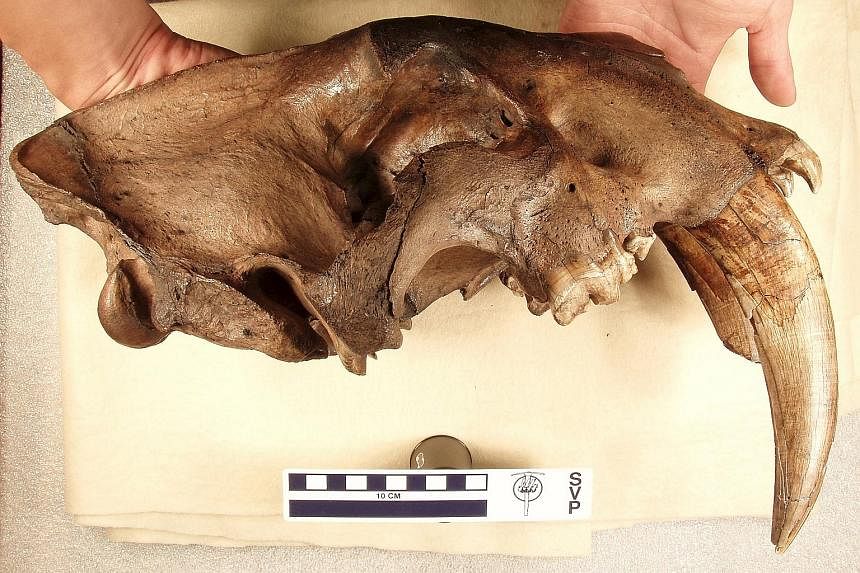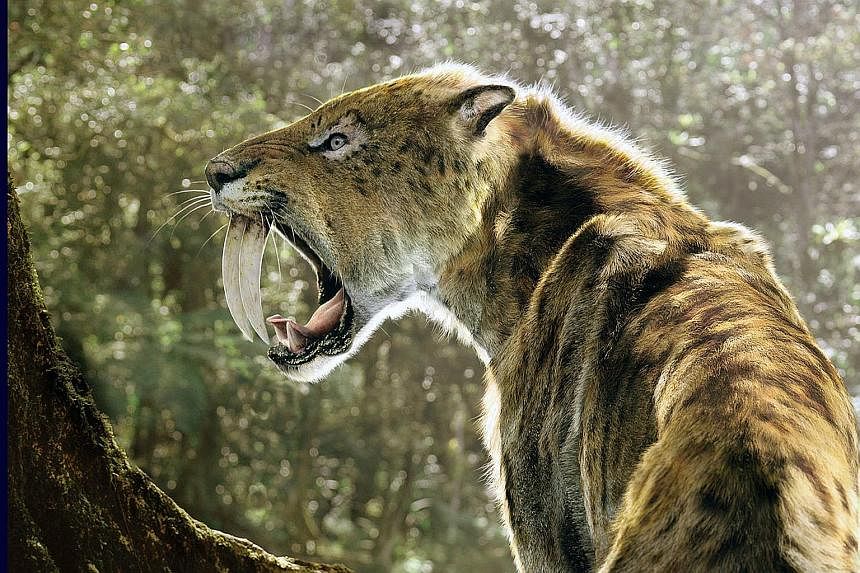WASHINGTON • The ferocious sabre-toothed cat Smilodon was a star in Hollywood long before it became Tinseltown, with extensive remains of this Ice Age predator that prowled North and South America preserved in the La Brea Tar Pits in Los Angeles.
"If you think about it, Smilodon fatalis likely left their paw prints on what is today Hollywood Boulevard long before Marilyn Monroe left her hand prints at the Chinese Theatre," said palaeontologist Z. Jack Tseng of the American Museum of Natural History in New York.
Scientists on Wednesday offered unique insights into the big cat's most famous feature: its dagger-like upper canine teeth.
Using sophisticated X-ray imaging and an analysis of oxygen isotopes in the cat's tooth enamel, they determined that its canines grew at twice the rate of those of today's African lions.
The scientists also ascertained that the Smilodon was at least three years old before its canines were fully in place.
These curved and serrated canines, reaching 18cm long, were quite a weapon. Smilodon is believed to have used them to bite the neck and sever crucial arteries and veins to kill prey quickly, palaeontologist Robert Feranec of the New York State Museum said.
Smilodon was about the size of a modern lion or tiger but more heavily built, with a stiffer back, powerful limbs and a stubby tail.
"Basically a lion on steroids with knives coming out of its mouth," Dr Tseng said.
It went extinct about 10,000 years ago, Dr Feranec said.
The study looked at Smilodon fatalis, one of three species of this cat, using remains from the La Brea Tar Pits, a treasure trove of Ice Age fossils including those of mammoths, mastodons, wolves, ground sloths, bison and camels.
Smilodon was drawn to the tar pits to feed on large prey trapped in the gooey asphalt seeps, and then also became stuck.
It grew a set of baby teeth before permanent ones grew in. Its "baby sabres" were shed at around one to 1½ years of age.
REUTERS


